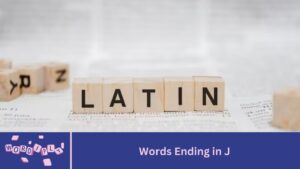Table of Contents
“Connection Quest: Unravel the Puzzle” invites players into a captivating world of interconnected challenges and brain-teasing puzzles. This game blends strategy with creativity, offering a unique puzzle-solving experience where every connection counts. Players are tasked with linking clues and solving intricate puzzles across various themes, ranging from historical enigmas to contemporary mysteries. The game’s engaging mechanics are designed to test and expand your problem-solving skills, providing endless hours of entertainment for both casual gamers and puzzle enthusiasts. With its intuitive design and diverse puzzle types, “Connection Quest” stands out as a fresh addition to the puzzle genre, appealing to those who enjoy a mental challenge and seek to sharpen their cognitive abilities. Dive in and discover a realm where every connection leads to new adventures and solutions.
Gameplay Mechanics
In “Connection Quest: Unravel the Puzzle,” the gameplay mechanics revolve around connecting various clues to solve a wide range of puzzles. Here’s a breakdown of how the mechanics work:
Clue Matching
Players are presented with a set of clues or pieces of information that seem unrelated at first glance. The goal is to find connections between these clues, leading to a correct solution. For example:
- Word Clues: Linking words with similar meanings or themes.
- Visual Clues: Identifying common elements in images.
- Pattern Recognition: Spotting hidden patterns or sequences.
Levels and Progression
The game typically progresses in levels, with each level offering a set of puzzles that increase in difficulty. Early levels might focus on simpler connections, while later levels introduce more complex relationships between clues. As players advance, they unlock more challenging puzzles, which can require a combination of logic, intuition, and knowledge.
Time and Scoring
Players might have a time limit to solve puzzles, encouraging quick thinking and strategic planning. A scoring system could be in place where:
- Time Bonuses: Faster solutions earn more points.
- Hint Penalties: Using hints or assistance may reduce the final score.
Hints and Assistance
For players who get stuck, there’s often a hint system. This might offer:
- Clue Highlighting: Revealing part of the solution or pointing out related clues.
- Step-by-Step Guidance: Providing guidance on how to approach solving the puzzle without giving the entire answer.
Interactive Elements
Players might need to interact with different elements on the screen. This could involve:
- Dragging and Dropping: Connecting visual or word-based clues by dragging them together.
- Highlighting: Selecting correct answers by tapping or clicking.
- Logical Input: Typing in words or selecting answers based on the connections made.
Progress Tracking
The game may feature a progress tracker, allowing players to see how close they are to completing a level or challenge. This helps in maintaining motivation and offers a sense of achievement as they complete each puzzle.
These mechanics make “Connection Quest” an engaging puzzle game that encourages critical thinking, creativity, and quick decision-making, while also providing help when needed.
Modes of Play
Certainly! Here’s an in-depth explanation of the Modes of Play in Connection Quest: Unravel the Puzzle:
Single-Player Mode
- Overview: This is the core mode where players can enjoy the game at their own pace. In this mode, players take on a series of puzzles that progressively increase in difficulty.
- Challenge Levels: The puzzles are divided into various levels, each designed to test a player’s logic, pattern recognition, and problem-solving skills. Players can unlock new levels by successfully completing prior ones.
- Replayability: In some games, single-player modes might offer replayability by providing new puzzles on repeat plays or adjusting the difficulty based on performance.
Multiplayer Mode
- Competitive Play: If multiplayer is part of the game, this mode allows players to go head-to-head against friends or other players. It adds a layer of competition by seeing who can solve puzzles faster or more accurately.
- Team Mode: In some multiplayer modes, players may also work together to solve puzzles in a cooperative setting, which can add an interesting dynamic as players must communicate and collaborate.
- Rankings: Multiplayer modes often feature leaderboards where players can track their performance against others, adding a competitive element that drives engagement.
Time Trial Mode
- Overview: For players who love a challenge, Time Trial Mode adds a ticking clock to the puzzle-solving experience. You’ll need to solve puzzles within a strict time limit, which forces players to think quickly and manage their resources or hints carefully.
- Scoring: Success in Time Trial Mode may be measured by how many puzzles a player can solve before time runs out or how quickly they can finish a particular puzzle. Higher speed and accuracy lead to better scores.
Daily Challenge Mode
- Overview: This mode presents players with a new puzzle every day, creating a routine challenge. These puzzles might be specially curated to be unique, ensuring players return regularly to test their skills.
- Exclusive Rewards: Daily challenges might offer special rewards like in-game currency, badges, or ranking boosts, motivating players to check in frequently.
Puzzle Creator Mode (if applicable)
- Create and Share: In this mode, players might be able to design their own puzzles, share them with friends or the community, and try puzzles created by others. This feature enhances user engagement by allowing for creative input and personal challenges.
- Community Rating: Other players may rate these user-generated puzzles, giving feedback and encouraging high-quality creations.
Casual Mode
- Overview: Casual Mode is ideal for players looking for a relaxed experience. It offers easier puzzles or removes timers, allowing for a stress-free environment.
- Perfect for Beginners: Players new to the game can use this mode to get acquainted with the mechanics without feeling rushed or pressured.
Event or Seasonal Modes
- Limited-Time Events: Some games offer special event modes tied to holidays, festivals, or other real-world occasions. These events may introduce unique puzzles, different rules, or exclusive rewards that players can earn only during the event period.
- Community-Based Events: These events may involve the global player base, encouraging collaboration or competition on a larger scale.
Puzzle Variety
PPuzzle variety is what keeps Connection Quest exciting and engaging for players of all skill levels. The game includes a wide range of puzzle types, ensuring that each challenge feels fresh and requires different forms of critical thinking. Here’s a breakdown of what to expect:
Visual Puzzles
These puzzles rely on observation and pattern recognition. Players may need to connect images, spot differences, or recognize shapes that fit together. Visual puzzles add a layer of complexity, especially for those who enjoy solving puzzles through imagery and spatial awareness.
Word-Based Puzzles
For lovers of word games, Connection Quest features word-based challenges that require linguistic skills. These may include:
- Anagrams: Rearranging letters to find hidden words.
- Word associations: Finding connections between seemingly unrelated words.
- Crossword-like clues: Completing puzzles based on clues related to specific themes.
Logic Puzzles
These are perfect for players who enjoy more cerebral challenges. Logic puzzles might involve connecting dots in a particular sequence, filling grids with specific rules, or solving step-by-step problems that test deductive reasoning.
Sequence and Pattern Recognition
In this type of puzzle, players need to recognize and complete a sequence or pattern. These puzzles often escalate in difficulty as players progress, making it critical to focus on small details or changes in each step.
Themed Puzzles
To add variety, puzzles are often organized into themes such as:
- History or Pop Culture: Players connect famous figures, events, or pieces of media.
- Nature or Science: Challenges based on elements from the natural world, requiring players to understand basic principles or make connections between different concepts.
- Abstract or Fantasy Themes: Puzzles with unique designs and imaginative connections that push creativity.
Combination Puzzles
Some puzzles in Connection Quest blend multiple puzzle types. For example, a challenge might begin with a visual puzzle and then require word connections to complete the level. This variety keeps the gameplay dynamic and unpredictable.
The diversity in puzzle types not only prevents monotony but also ensures that Connection Quest appeals to a broad audience, from casual players to puzzle enthusiasts.
How to Win
Winning in “ConnectiWinning in “Connection Quest” involves more than just solving puzzles; it’s about mastering the game’s intricacies and employing strategic thinking. Here’s how you can improve your chances of coming out on top:
Understand the Objective
- Focus on Connections: Each puzzle requires you to find links between different clues or elements. Pay attention to patterns, relationships, and common themes.
- Read Instructions Carefully: Before diving in, make sure you understand what each puzzle is asking. Misinterpreting the task can lead to wasted time and incorrect answers.
Develop a Strategy
- Plan Your Approach: Start by breaking down the puzzle into manageable parts. Tackle one section at a time to avoid feeling overwhelmed.
- Prioritize Tasks: If the puzzle involves multiple steps or categories, prioritize tasks based on difficulty or importance.
Leverage Hints Wisely
- Use Hints Sparingly: If you’re stuck, hints can be a lifesaver. However, over-reliance on them may affect your overall score or progress.
- Understand Hint Functionality: Learn how hints are provided—whether they reveal part of the solution or offer guidance. This will help you use them more effectively.
Master Time Management
- Keep an Eye on the Clock: Many puzzles are timed. Develop a sense of urgency without sacrificing accuracy. Practice can help improve your speed.
- Allocate Time Efficiently: Divide your time wisely among different puzzles or sections. Spend more time on challenging areas and less on simpler ones.
Practice and Improve
- Play Regularly: The more you play, the better you’ll understand the game’s nuances and strategies.
- Learn from Mistakes: Analyze any errors or incorrect guesses to understand what went wrong and how to avoid similar mistakes in the future.
Engage with the Community
- Join Forums or Groups: Engage with other players to share strategies and tips. Community insights can offer valuable perspectives.
- Participate in Challenges: Take part in special events or community challenges to sharpen your skills and test your strategies in different scenarios.
Stay Calm and Focused
- Maintain Composure: Puzzles can be tricky, and frustration might cloud your judgment. Staying calm helps in maintaining clarity and making better decisions.
- Take Breaks if Needed: If you find yourself stuck for too long, take a short break. Returning with a fresh perspective can often lead to breakthroughs.
By following these strategies, you’ll not only improve your performance but also enhance your overall enjoyment of “Connection Quest: Unravel the Puzzle.” Happy puzzling!
Why Connection Quest Stands Out
“Connectio”Connection Quest: Unravel the Puzzle” stands out for several key reasons, making it a unique and captivating experience for puzzle lovers:
Blending of Different Puzzle Types
Unlike traditional puzzle games that focus on one format, Connection Quest mixes multiple puzzle styles, including logic puzzles, word games, and visual challenges. This variety keeps the game fresh and exciting, as players never know what type of problem they’ll encounter next.
Challenging Yet Accessible Gameplay
The game is designed to be intuitive for beginners but offers progressively harder levels for more experienced players. This balance ensures it remains fun and engaging for a broad range of users, from casual gamers to puzzle enthusiasts seeking a serious challenge.
Innovative Connection-Based Mechanics
The game’s core mechanic—finding connections between seemingly unrelated elements—adds an extra layer of thinking. It’s not just about solving puzzles but also about recognizing patterns and drawing links, which makes the gameplay feel more interactive and mentally stimulating.
Thoughtfully Designed Levels
Each level is carefully crafted, offering well-thought-out challenges that are neither too easy nor too frustrating. The balance of difficulty provides a satisfying experience as players move through increasingly complex puzzles.
Visual and Aesthetic Appeal
The game’s clean, modern graphics and vibrant design create an appealing atmosphere. The visual clarity ensures players can focus on solving puzzles without distraction, while the overall aesthetic enhances the user experience.
Cognitive Engagement
Connection Quest sharpens players’ cognitive abilities, encouraging critical thinking, problem-solving, and creativity. Its educational benefits make it a perfect fit for anyone looking to engage their mind in a fun and entertaining way.
Community Features and Leaderboards
Players can connect with others through community features like global leaderboards, which foster friendly competition. This social aspect adds another layer of motivation, as players aim to improve their rank and challenge their friends.
By combining variety, depth, and innovative mechanics, Connection Quest sets itself apart from other puzzle games, offering a well-rounded and rewarding experience.
Game Design and Graphics
Visual Appeal and User Interface
- Aesthetics: “Connection Quest” features a visually captivating design with a clean, modern aesthetic. The game’s visuals are crafted to draw players in, with vibrant colors and well-designed graphics that enhance the gaming experience. Each puzzle type has a unique look, making the game visually diverse and engaging.
- User Interface (UI): The UI is intuitive, ensuring players can navigate through menus, puzzles, and options with ease. The layout is designed for clarity, with easily recognizable icons and straightforward controls. This user-centric approach minimizes confusion and allows players to focus on solving puzzles rather than struggling with navigation.
Audio and Sound Design
- Sound Effects: Sound effects in “Connection Quest” are subtle yet impactful, providing feedback that enhances the gameplay experience. From the satisfying click of completing a puzzle to ambient background sounds, the audio elements contribute to immersion without overwhelming the player.
- Music: The game features a dynamic soundtrack that adapts to different gameplay situations. Whether players are tackling a challenging puzzle or cruising through easier levels, the music sets the tone and pace, creating an engaging atmosphere that complements the visual design.
Overall Aesthetics
- Theme Integration: The game’s overall aesthetic is integrated with its puzzle themes. Each puzzle category—be it historical, cultural, or nature-themed—features design elements that reflect the theme, enhancing the player’s connection to the content.
- Visual Feedback: The game uses visual feedback to guide players through their puzzles. This includes highlighting correct connections, providing visual clues, and offering animations that celebrate successful completions. These elements not only assist with gameplay but also make the experience more rewarding and enjoyable.
Technical Design
- Performance: The game is optimized for smooth performance across various devices. The graphics are designed to look great on both high-resolution screens and lower-resolution displays, ensuring a consistent experience for all players.
- Scalability: The design allows for scalability, meaning future updates or additional content can be seamlessly integrated into the existing framework. This ensures that the game remains fresh and exciting, with new visual elements and designs added over time.
Developer Insights
- Design Philosophy: The design team focused on creating an immersive and visually appealing game that aligns with the puzzle-solving experience. Their goal was to balance aesthetics with functionality, ensuring that the visuals enhance rather than distract from the gameplay.
- Player Feedback: The developers actively seek feedback from players to refine the visual and audio elements of the game. This ongoing dialogue helps them make adjustments and improvements, keeping the game in tune with player preferences and expectations.
By combining a striking visual design with a user-friendly interface and engaging audio elements, “Connection Quest: Unravel the Puzzle” creates an immersive and enjoyable gaming experience.
Tips and Tricks
Start with the Obvious Connections
When beginning a puzzle, identify the most straightforward connections first. Look for clues that have a clear link, whether it’s by theme, color, or word association. This helps build momentum and clears the board of easier options, making complex ones easier to tackle.
Use the Process of Elimination
If you’re stuck, eliminate possibilities that don’t make sense. Narrowing down your options can reveal the correct connection. Often, puzzles involve multiple answers, so crossing out wrong choices helps you find the right fit faster.
Pay Attention to Patterns
Many puzzles have hidden patterns or recurring themes. If you notice a pattern emerging (like a sequence of numbers or letters), it can help predict future connections or solve trickier parts of the puzzle.
Use Hints Wisely
Hints are a valuable resource in the game, but using them too early can make later puzzles more difficult. Save them for when you’re genuinely stuck. Before using a hint, try taking a break and coming back to the puzzle with fresh eyes.
Think Outside the Box
Some puzzles may require abstract thinking or a different approach than the obvious. Try to consider unconventional connections, as this can unlock answers you might not see at first glance.
Work Backwards
Sometimes, solving a puzzle in reverse order can help. Instead of focusing on what comes first, think about how the final pieces fit together. This method is especially useful for complex puzzles with multiple layers of clues.
Stay Organized
Keep track of your thought process as you work through each puzzle. Writing down notes or mentally categorizing possible answers can help you avoid confusion when dealing with harder puzzles that involve multiple steps.
Don’t Rush
Patience is key in Connection Quest. Take your time and ensure you’re confident in each connection before making a decision. Rushing can lead to mistakes and make the puzzle more frustrating.
Utilize Trial and Error
If you’re unsure of a solution, try different connections. Sometimes trying out possibilities, even if you’re not completely confident, can reveal the right path.
Stay Calm Under Pressure
Some modes may involve a time limit, but it’s essential to stay calm. Focus on one part of the puzzle at a time. Panicking often leads to errors, so keeping a cool head improves your chances of solving the puzzle successfully.
Future Updates and Community Engagement
This section focuses on the game’s long-term vision and how it continues to evolve, keeping players excited and engaged.
Planned Updates or Expansions
- New Puzzle Packs: Highlight any upcoming puzzle sets or levels that will be added. Mention how these updates will introduce fresh challenges, new themes, or increased difficulty to keep players entertained.
- Game Enhancements: Discuss any planned improvements in the user interface, game mechanics, or overall experience. This could include smoother gameplay, better graphics, or even new gameplay modes.
- Special Events or Seasonal Updates: Talk about limited-time events, seasonal challenges, or themed puzzles that may be added (e.g., holiday-themed puzzles or special anniversaries).
- Player Feedback Implementation: Emphasize that developers listen to player feedback and use it to enhance the game, showing that the community’s voice matters.
Community Involvement
Leaderboards and Rankings: Discuss how players can compete with each other through leaderboards or global rankings. This adds a layer of competitiveness and motivates players to improve.
Forums and Social Media: Explain how players can engage with each other outside the game. Mention any forums, Reddit groups, or official social media channels where they can share tips, ask questions, or discuss strategies.
Player-Generated Content: If applicable, include the possibility for players to create and share their own puzzles, offering a space for creativity and deeper interaction within the community.
Developer Engagement: Highlight how the development team interacts with players, whether through community updates, patch notes, or responding to queries. This could include live Q&A sessions, feedback polls, or developer diaries.
Building a Community
- Collaborative Play: If the game includes multiplayer options or team challenges, explain how players can work together, compete, or form alliances, encouraging social interaction.
- Rewards for Engagement: Mention any rewards or bonuses players can earn by participating in community events or challenges, adding a layer of incentive to be part of the game’s active community.
Closing Thoughts
In Connection Quest: Unravel the Puzzle, players are immersed in a world of brain-teasing challenges that blend creativity and logic. Its unique puzzles, engaging gameplay, and vibrant community make it more than just a game—it’s a mental adventure. Whether you’re a casual gamer or a puzzle enthusiast, this game offers endless opportunities for connection and discovery. Dive in, challenge yourself, and see how far your puzzle-solving skills can take you!
FAQ’s
1.What is Connection Quest: Unravel the Puzzle?
Connection Quest is a puzzle game where players connect clues, solve riddles, and unravel complex puzzles to advance through various levels.
2.How do you play Connection Quest?
Players solve puzzles by identifying connections between clues, symbols, or words. Each correct answer unlocks new levels or challenges.
3.Is Connection Quest free to play?
Yes, the base game is free, but it may offer in-app purchases for additional content or hints.
4.Can I play Connection Quest offline?
Yes, the game offers offline play for most levels, although some features may require an internet connection.
5.Is Connection Quest available on both Android and iOS?
Yes, the game is available for download on both the Google Play Store and the Apple App Store.
6.What types of puzzles are in Connection Quest?
The game features word puzzles, visual puzzles, logic challenges, and thematic puzzles across a variety of topics.
7.Are there different difficulty levels?
Yes, the game has varying levels of difficulty, from beginner-friendly puzzles to more complex and challenging ones for advanced players.
8.Can I play Connection Quest with friends?
While primarily a single-player game, some modes or challenges may offer multiplayer or cooperative play options.
9.How can I get hints in the game?
Hints can be earned through gameplay or purchased as in-app rewards to help players solve difficult puzzles.
10.Are there daily puzzles or challenges?
Yes, Connection Quest offers daily challenges with unique puzzles to keep players engaged.
11.What happens if I get stuck on a puzzle?
You can use hints, skip the puzzle, or replay earlier levels to improve your puzzle-solving skills.
11.Is there a time limit for solving puzzles?
Some modes have time limits, while others allow you to solve puzzles at your own pace.
12.Can I play Connection Quest on multiple devices?
Yes, if you link your account, you can continue your progress across multiple devices.
13.How often does Connection Quest release new puzzles?
New puzzle packs and updates are released regularly to keep the game fresh and exciting.
14.Does the game offer achievements or rewards?
Yes, players can earn rewards and achievements for completing levels, solving puzzles quickly, or meeting other milestones.
15.Is there a community where players can discuss puzzles?
Yes, players can join online forums, social media groups, or in-game chats to discuss strategies and share tips.
16.Can I customize the game interface or themes?
Some customization options, such as background themes or avatars, may be available in the game.
17.What age group is Connection Quest suitable for?
The game is suitable for players of all ages, though some puzzles may be more challenging for younger players.
18.How can I submit feedback or report an issue?
You can contact the developers through the app’s support section or official website.
19Are there plans for future expansions or updates?
Yes, the developers are continuously working on new puzzles, features, and updates based on player feedback and trends.

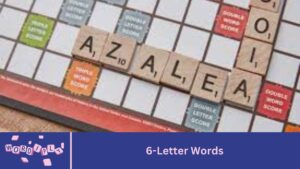

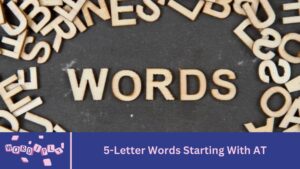


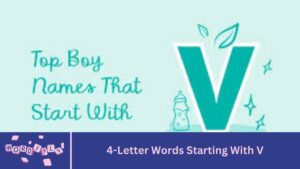
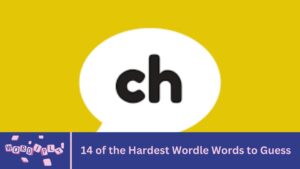
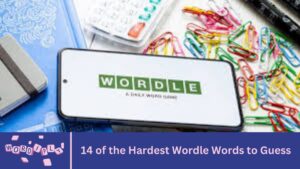
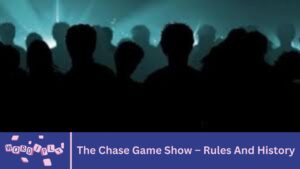
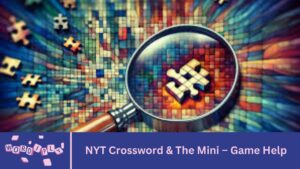
![Science Fiction Book Sales Statistics [2023]](https://wordiplypro.com/wp-content/uploads/2024/09/Add-a-heading-17-300x169.jpg)



